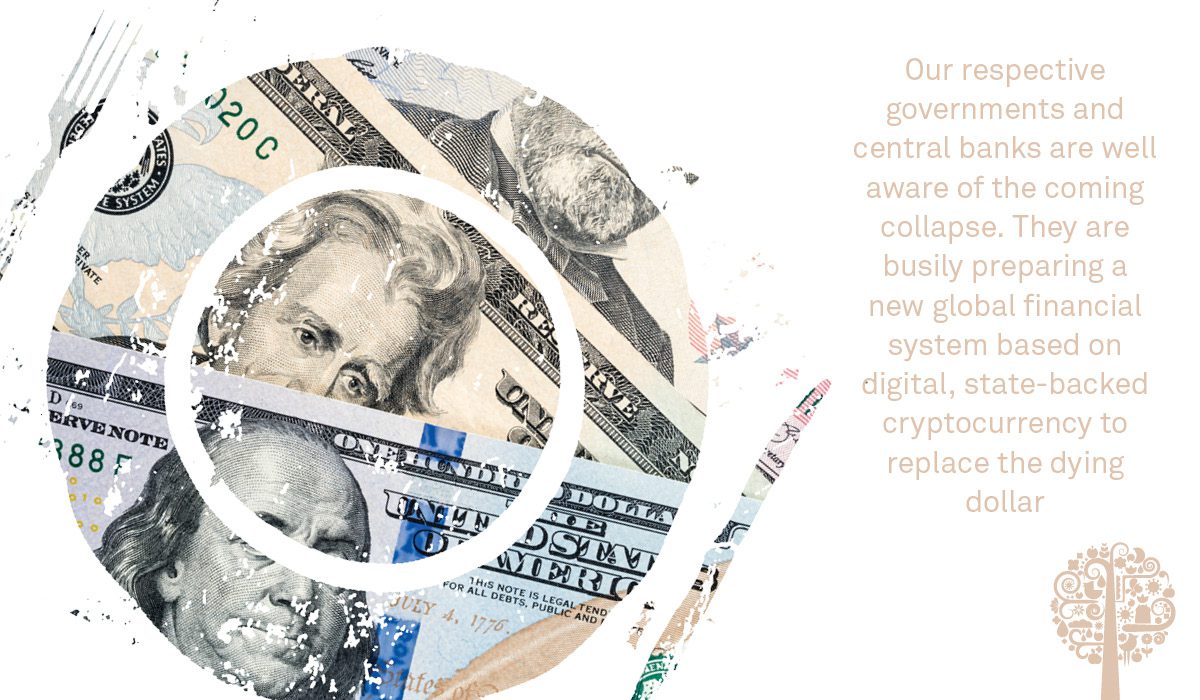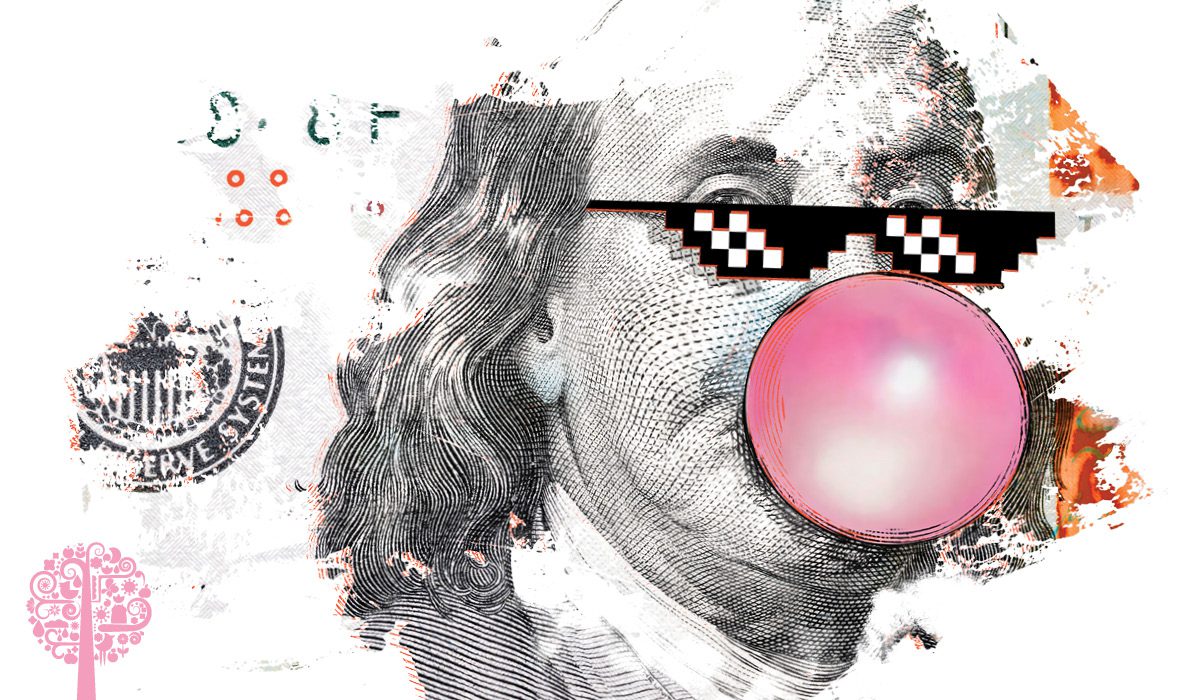Taking Liberties: How To Survive Hyperinflation
“Your people are driven by a terrible sense of deficiency. When the last tree is cut, the last fish is caught, and the last river is polluted; when to breathe the air is sickening, you will realize, too late, that wealth is not in bank accounts and that you can’t eat money.” – Alanis Obomsawin (probably based on Native American sayings.)
Hyperinflation is coming. Look up the financial collapse of the Weimar Republic or Zimbabwe if you need some historical reference points. There’s a big difference this time, however, as it’s the almighty U.S. dollar that’s going to hit the skids, not some minor currency. Of course, as the U.S. dollar is the world’s reserve currency, it will take the entire global financial system down with it. Around a fifth of all U.S. dollars in circulation were created in 2020—that’s over 9 trillion dollars. While official inflation rates still hover under two percent, the cost of real “in-demand” goods is already sky-rocketing. Lumber, for example, a staple building material in the United States, is up 193% compared with last year. Where is all this heading?
Not as Good as Gold
It may be fifty years since Nixon “temporarily suspended” the U.S. dollar’s convertibility into gold, but now the colossal Ponzi scheme known as the de facto post-Bretton Woods global financial system is entering the final stages of its inevitable demise. Too many debt dollars have been created, and the growth of goods and services cannot possibly keep up—nor would any ecologically-minded person want it to! It’s only a matter of time before the rest of us catch on and realize that our paper or digital IOUs represent nothing more than a ridiculous, unpayable debt. This “money,” as we call it, is essentially worthless. Now, as our collective belief in this fiscal fantasy evaporates, Main Street is figuring out that the game of fiat currency is up.
Of course, the rich are busy spending their winnings before the proverbial plebeian penny drops. And wouldn’t you? Let’s say you were sitting on a million bucks—sorry, that’s rather 1990—let’s say a billion bucks—and you knew that the purchasing power of your unfathomably large stack of 100s was shortly going to be reduced by 99.99%. Wouldn’t you look to quickly swap them all for something more valuable, persistent, and stable? So far, a large amount of surplus cash has found a temporary home in stock market speculation—hence the apparent “boom” even though many businesses have been unable to operate or have faced huge supply chain issues during the last 12 months. Given the challenges we’re all supposed to be facing right now, you might be forgiven for wondering why the Dow Jones index has risen 45%. But history tells us that stock market bubbles invariably precede a crash as the cash-rich hastily convert their liquid capital into whatever assets they can find—not just stocks, but also property, land, fine art, and commodities. It’s all about ABC—Anything But Cash.
What about Bitcoin?
Already, some canaries are taking suspiciously long naps in the coal mine. One harbinger of the coming craziness could well be the rise in bitcoin’s value (as expressed in dollars). While some crypto-enthusiasts are frothing with glee at the notion of “getting rich quick” in return for scratching their balls lazily through their dressing gowns each morning and watching doe-eyed at the miracle of electricity passing cyclically over a bunch of silicon nano-transistors, I strongly suspect that bitcoin’s price is more a reflection of the dollar’s bloated demise and less a veritable statement of bitcoin’s actual value. I liken it to comparing the stench of Santa’s breath with a unicorn fart. We’re making it all up! What started as an interesting idea (decentralized currency) has sadly been speculated to death. Suffice to say; bitcoin is not an intrinsic solution to our very human problem of greed. However, it has—at the very least—shone a torch on our wrongheaded relationship with money in the first place. Money isn’t about getting rich for sitting around and doing nothing—it’s about exchanging real value.
The Coming Collapse
But wait—what do everyday people like you and me do when our national or regional currencies’ purchasing power has been reduced to near-zero and the paltry $350 languishing in our checking accounts won’t even buy a scattering of sesame seeds, let alone a loaf of bread? Our respective governments and central banks are well aware of the coming collapse. They are busily preparing a new global financial system based on digital, state-backed cryptocurrency to replace the dying dollar. A single global currency? Maybe—certainly all “new money” will be digital and issued by central and commercial banks. Every transaction on the planet will be trackable and traceable; no more cash. As such, you will be required to possess a global electronic ID to buy or sell anything. This will yield an unprecedented level of societal control to governments, technology firms, and banks. Not fully up-to-date with your family’s vaccination schedule? That’s unfortunate—so let us nudge your behavior in the right direction by amending your tax rate from the end of the month. Oh, and don’t worry, Siri has already booked you an appointment at the local “health clinic” next Tuesday. We’ll send you a reminder when it’s time to leave.

Whether or not the above scenario gives you the eschatological heebie-jeebies is another matter. What we need to understand right here and now is that there is another solution to our monetary crisis—we’re just not being told about it. Instead, the new monetary order will be framed in ecological, airy-fairy, sharing terms to give us a fuzzy feeling that we’re all going to enjoy a life upgrade. Alas, the real solution isn’t quite as appealing as getting rich from bitcoin because this ancient monetary system is based on … wait for it … actual demand for real goods and services. As such, it’s intrinsically linked to the finite resources of our planet.
What about barter? For example, I’m holding a spare pound of wheatgrass, and you’re looking to unload a surplus of two dozen eggs. Perfect if we both see them as equally valuable. But it rarely works out like that in practice. Typically, you balk at the taste of my wheatgrass (Ewww, mids!) or, even worse, I’m a virtue-signaling vegan who—for some bizarre reason—has an objection to consuming chicken menstruation. But what if, as a producer of something valuable, I could issue myself with digital tokens—backed by, and redeemable for, my product—based on actual and proven demand—and trade with those instead?
Money as Self-Issued Credit
Imagine money not only backed by eggs and wheatgrass but also haircuts, electricity, massages, bricklaying, psychiatric therapy, weed suppressant, copywriting services, even financial advice! In short, imagine a form of money backed by real things that regular people need every day. Store it all in the blockchain if you like—and yes, we would need a global, unmoving scale of value upon which to quantify these goods and services. But if we can already think in terms of bitcoins and dollars, is it much of an ask to conceive of such a scale and thousands of currencies measured on it? After all, why should banks continue to enjoy a monopoly over money creation?
It’s easy to scoff at the idea of corporations creating their currencies—but the power it would put into consumers’ hands is truly awesome. Don’t like the way a company conducts its business? Stop accepting its currency. It’s as simple as that. A common objection is a fear that a given corporation will print too much of its own money. But it can automatically adjust its value to reflect the actual demand for its goods or services.

Self-issued credit is not a new idea. It’s just that we have been hoodwinked for centuries into handing our innate money power over to the banks. These days, we are so accustomed to our monetary slavery that we are blind to the simplicity of the solution staring us in the face. The monetary reformist, Edwin Riegel, detailed it all for us in his salient text “The New Approach to Freedom”, and I highly commend it to you. As I repeatedly tell my eight-year-old son, “YOU ARE THE MONEY!”. You represent the true value in this world: your time, your productivity, your energy, your skills.
Start Producing and Networking
When hyperinflation comes, we won’t be able to afford anything, least of all to think like victims. I don’t want to receive hungry emails, “But Everest, I don’t own any land to grow my food!” (As if a title deed is the only thing standing between you and self-sufficiency.) Ask yourself instead, “Where am I going to grow some food?” and realize that somebody must have a small parcel of land they don’t mind you improving with compost and chicken manure! (Find some local seniors. You may be surprised how enthusiastic they are about the prospect of you working their land.)
This is a time for revolutionary levels of optimism and togetherness – it’s the only mentality that will see us through this tricky epochal shift. If you’re interested in learning more, then please watch the YouTube movie by Canadian artist Paul Grignon, entitled “The Essence of Money” and also don’t miss his excellent three-part series “Money as Debt” for the full “red pill” experience. More resources listed below. This is supposed to be the age of information, after all. Ignorance is no longer a reasonable excuse.




